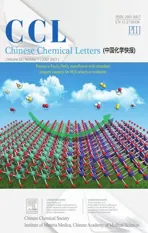Redox deracemization of α-substituted 1,3-dihydroisobenzofurans
2021-10-12XiohnChenRnZhoZiqingLiuShutoSunYingngQingyunLiuXiSunLeiLiu
Xiohn Chen ,Rn Zho,Ziqing Liu,Shuto Sun,Yingng M,Qingyun Liu**,Xi Sun**,Lei Liu,,d,*
a School of Pharmaceutical Sciences, Cheeloo College of Medicine, Shandong University, Ji ’nan 250012, China
b College of Chemical and Biological Engineering, State Key Laboratory of Mining Disaster Prevention and Control Co-founded by Shandong Province and the Ministry of Science and Technology, Shandong University of Science and Technology, Qingdao 266590, China
c School of Chemistry and Chemical Engineering, Shandong University, Ji ’nan 250100, China
d Shenzhen Research Institute of Shandong University, Shenzhen 518057, China
e Department of Pharmacology, School of Basic Medical Sciences, Cheeloo College of Medicine, Shandong University, Ji ’nan 250012, China
ABSTRACT Chiral α-substituted 1,3-dihydroisobenzofurans are key scaffolds in a number of bioactive natural products and synthetic pharmaceuticals.However, catalytic asymmetric approaches have been rarely developed.Here, a redox deracemization technology is adopted to address the catalytic asymmetric synthesis.A broad range of α-aryl substituted 1,3-dihydroisobenzofurans are effectively deracemized in high efficiency with excellent ee.α-Alkynyl substituted ethers were also compatible with the deracemization technology.
Keywords:1,3-Dihydroisobenzofuran Asymmetric catalysis Redox deracemization Oxocarbenium ion Synthetic method
Chiral α-substituted 1,3-dihydroisobenzofurans are key scaffolds in a number of bioactive natural products and synthetic pharmaceuticals [1].Although a variety of racemic routes have been reported,there are surprisingly few catalytic enantioselective approaches to this important class of chiral molecule 2–4].Existing studies predominantly relied on asymmetric intramolecular cyclization strategy involving C –O bond formation(Scheme 1A) [2].Despite excellent ee values, pre-installation of reactive functional groups, such as alkenes and ethers, were prerequisite.Subsequently, an elegant iridium(III)-catalyzed enantioselective C –H alkylation of 1,3-dihydroisobenzofurans with ethyl diazoacetate was disclosed,though 4.0 equiv.of the substrate was required (Scheme 1B) [3].Recently, our group developed a kinetic resolution of racemic α-aryl and -alkynyl substituted 1,3-dihydroisobenzofurans through asymmetric C –H oxidation with excellent chiral recognition (Scheme 1C) [4].However, the theoretical yield of the recovered enantiopure phthalans can not exceed a limit of 50%.Therefore, development of a strategically different approach through C –H bond manipulation in high efficiency would be a highly attractive project to pursue.
Deracemization, wherein a racemic target is directly and completely converted to a single enantiomer of exactly the same molecule in theoretically 100%yield,has emerged as an attractive and straightforward alternative to conventional asymmetric synthesis[5].Despite conceptual simplicity and potential practical benefits, catalytic non-enzymatic deracemization has remained scarce [6], and existing methods typically focus on alcohol or amine substrates through oxidation and reduction chemistry,whose oxidized intermediates are stable and isolable ketones and imines, respectively 7–9].Redox deracemization of ethers involving unstable oxidized oxocarbenium ion intermediates remained rarely disclosed, and existing method always focuses on six-membered cyclic benzylic ethers [10].Herein, we report a one-pot redox deracemization of α-substituted 1,3-dihydroisobenzofurans (Scheme 1D).
Initially, redox deracemication of 1,3-dihydroisobenzofuran rac-1a was chosen for optimization employing Hantzsch ester 2 and chiral phosphoric acid (CPA) 3 as the asymmetric reduction system (Table 1) [11].The reaction was performed in a two-step,one-pot manner to avoid direct quench of oxidant and reductant.When 1 equiv.of DDQ was used as the oxidant, an incomplete consumption of rac-1a was observed(entry 1,Table 1)[12].Protic additives proved to be crucial to complete oxidation and enantioselectivity,and MeOH was identified to be optimal(entries 2-6).Reaction without 5 Å molecular sieve afforded an inferior result (entry 7).A series of CPA catalysts were then evaluated,revealing that C2-symmetric imidodiphosphoric acid 3e was the best choice, which might be ascribed to the sterically highly demanding and rigid chiral microenvironment around the active site of 3e(entries 3 and 8-12).Solvent optimization suggested that deracemization proceeded most efficiently in a mixed solvents of CH2Cl2and toluene(entry 13).Adding Hantzsch ester prior to the oxidation was ineffective (entry 14).
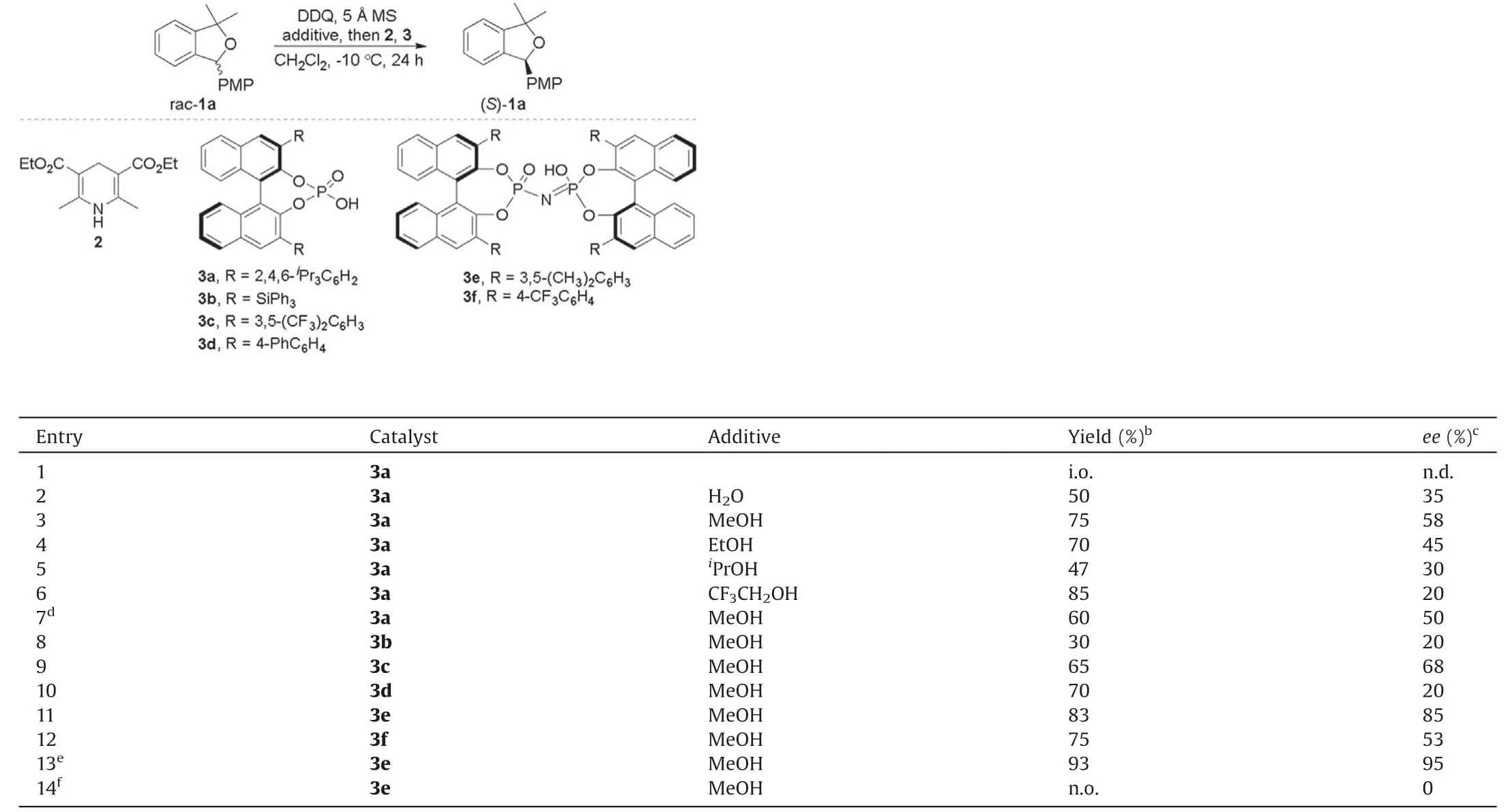
Table 1 Reaction condition optimization.a
With the optimized reaction conditions in hand, the scope of redox deracemization of 1,3-dihydroisobenzofurans was explored(Scheme 2).A range of electron-donating and -withdrawing substituents on the benzylic ether arene skeleton were well tolerated,as demonstrated by generation of enantiopure 1a-1e in good yields (88%–95%)with excellent enantiocontrol (90%–96%ee)(Scheme 2A).Modification of the geminal C1-disubstitution did not impair the reactivity and selectivity for 1f- j(Scheme 2B).Notably,spirocyclic 1g- j bearing diverse ring size and functionality pattern were compatible with the deracemization process.The deracemization of simple 1,3-dihydroisobenzofuran 1k without geminal C1disubstitution was next explored.While a complete oxidation could be achieved,a competitive oxidation at C1position was also observed.The geminal C1disubstitution also proved to be crucial to the enantioselectivity,and 1k was isolated in 30%yield with 6%ee.

Scheme 1.Overview of catalytic asymmetric synthesis of α-substituted 1,3-dihydroisobenzofurans.
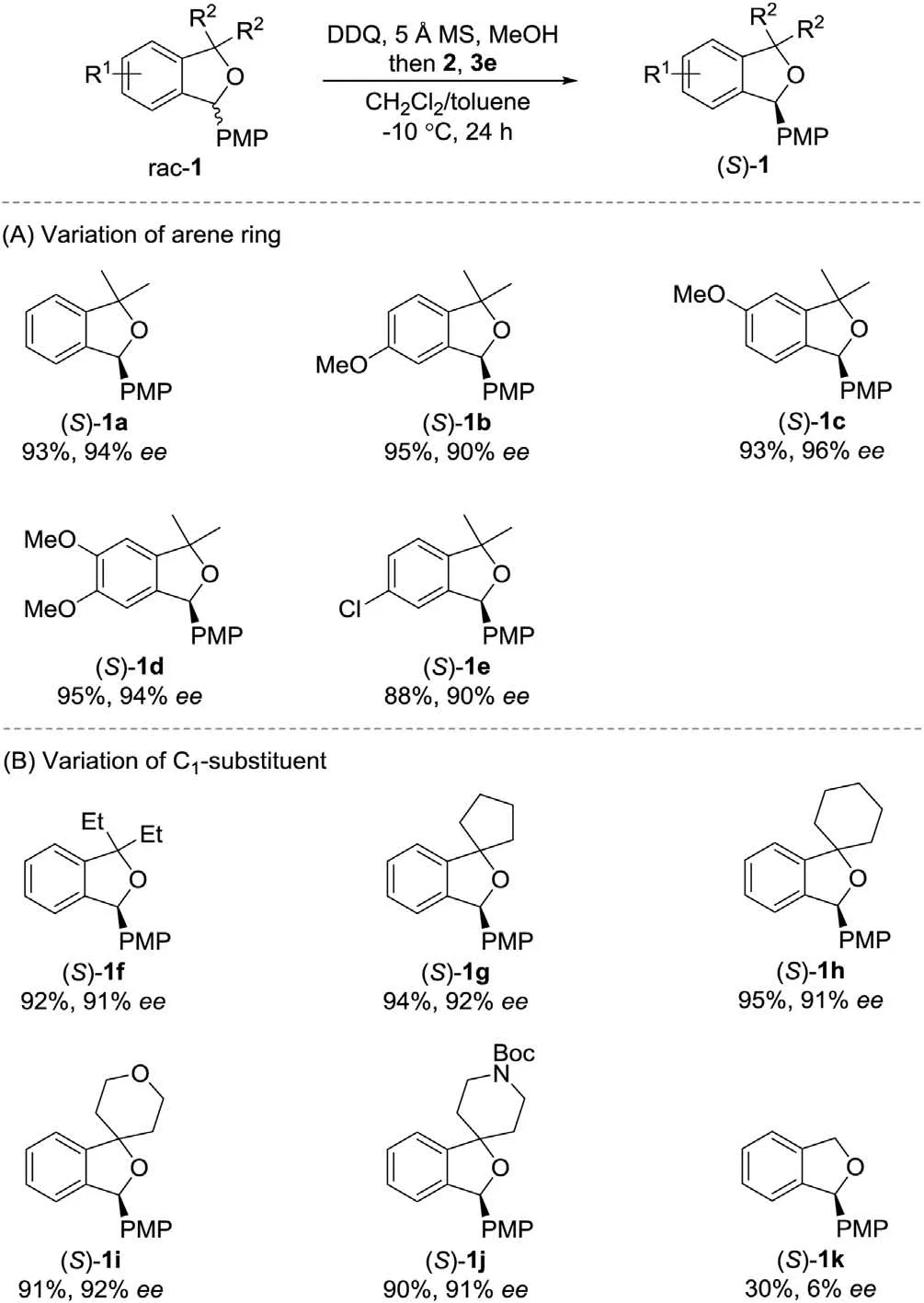
Scheme 2.The scope of 1,3-dihydroisobenzofuran skeleton.
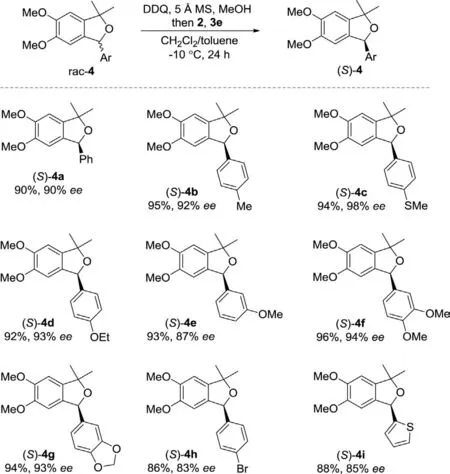
Scheme 3.The scope of α-aryl substituents.
The scope of α-substituent patterns was next investigated(Scheme 3).A variety of electronically varied aryl moieties at α position participated in the redox deracemization smoothly,providing respective 4a- h in good yields with good to excellent ee (83%-98%).Heteroaryl rac-4i was also a suitable component.
Besides diverse α-aryl substituents, α-alkynyl substituted 1,3-dihydroisobenzofurans were also competent substrates, as demonstrated by effective deracemization of rac-5 giving (S)-5 in 90%yield with 80% ee (Scheme 4).Under the standard oxidation conditions, α-alkyl substituted 1,3-dihydroisobenzofurans cannot be completely oxidized (see Supporting information for details).
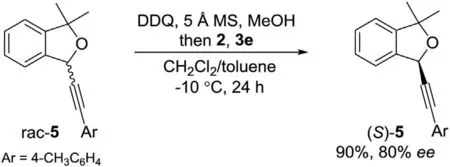
Scheme 4.Redox deracemization of α-alkynyl substituted 1,3-dihydroisobenzofurans.
The additive MeOH proved to be beneficial for reaction efficiency and enantioselectivity.Accordingly, the deracemization process was performed stepwise to understand the role of MeOH.Oxidation of rac-1a with DDQ and MeOH proceeded smoothly,affording ketal 6 in high efficiency (Scheme 5A).Under the standard deracemization conditions in the absence of oxidation elements,ketal 6 was reduced to(S)-1a with comparable ee to that observed in deracemization reaction (Scheme 5B).The observations suggested that a ketal intermediate might be involved in the deracemization process.Based on the results in entries 2-6 in Table 1,1,3-dihydroisobenzofuran-based ketal bearing a methoxy moiety might be the best intermediate for asymmetric transfer hydrogenation with respective to the enantiocontrol, though the origin of the observation remains unclear.
Based on the above studies, a plausible mechanism for redox deracemization of 1,3-dihydroisobenzofurans was suggested(Scheme 5C).Ether rac-1a was oxidized by DDQ to generate oxocarbenium intermediate 7, which was captured by MeOH giving ketal 6.CPA 3e catalyzed the collapse of 6, furnishing a contact ion pair 8 for subsequent asymmetric reduction with Hantzsch ester 2 to complete the redox deracemization process.
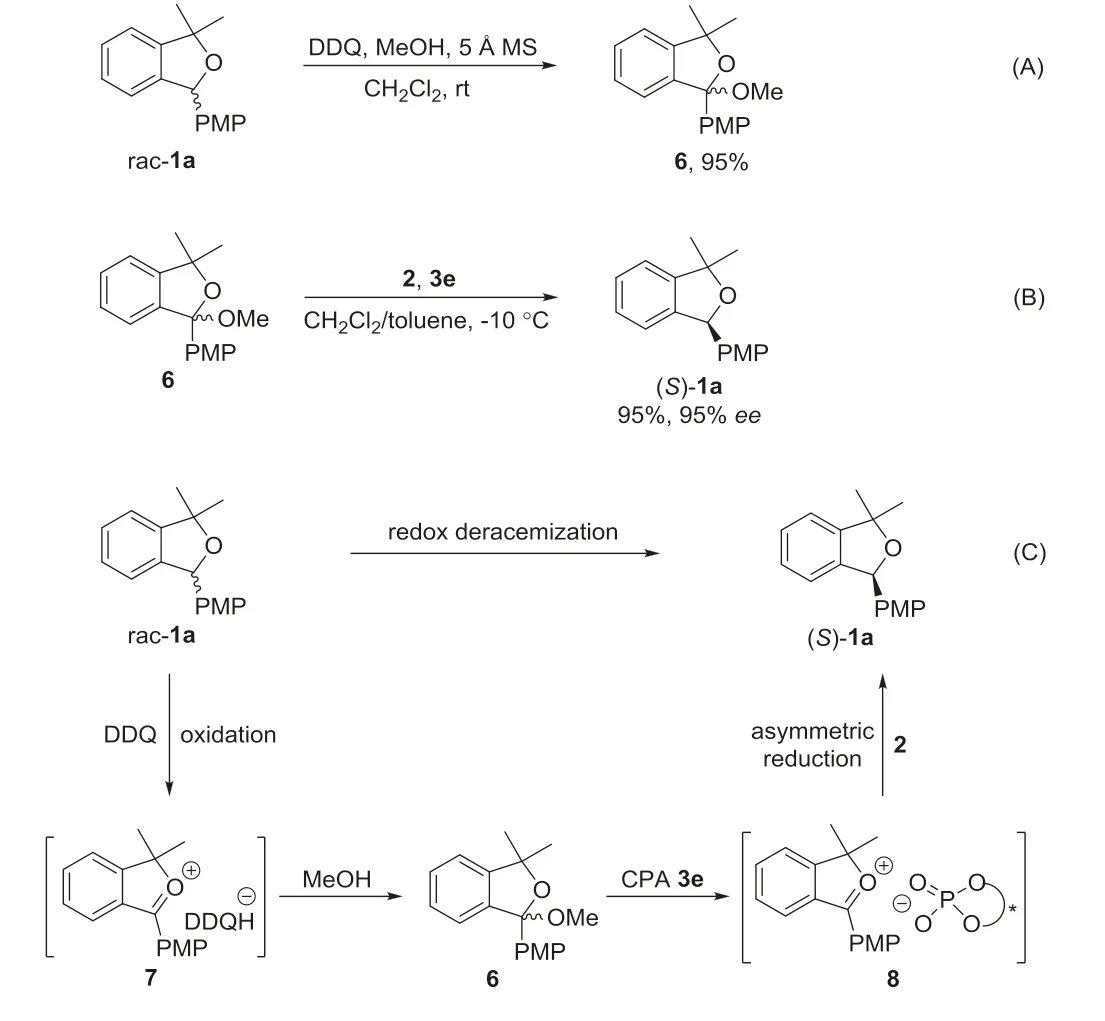
Scheme 5.Control experiments and proposed mechanism for redox deracemization process.
In summary, a one-pot redox deracemization of α-substituted 1,3-dihydroisobenzofurans has been disclosed.MeOH was found to be crucial to the reaction efficiency and enantioselectivity by forming a ketal intermediate.A range of α-aryl substituted fivemembered cyclic benzylic ethers were effectively deracemized. α-Alkynyl substituted ethers were also compatible with the deracemization technology.
Declaration of competing interest
The authors declare that they have no known competing financial interests or personal relationships that could have appeared to influence the work reported in this paper.
Acknowledgments
This work was financial supported by the National Natural Science Foundation of China(Nos.21971148)and Shenzhen Special Funds ( No.JCYJ20190807093805572).
Appendix A.Supplementary data
Supplementary material related to this article canbefound, in the online version,at doi:https://doi.org/10.1016/j.cclet.2021.02.021.
杂志排行
Chinese Chemical Letters的其它文章
- Perspective on antiferroelectrics for energy storage and conversion applications
- Advances in engineering RuO2 electrocatalysts towards oxygen evolution reaction
- Current research progress of photopolymerized hydrogels in tissue engineering
- Hydrogen peroxide-generating nanomedicine for enhanced chemodynamic therapy
- In-situ and one-step preparation of protein film in capillary column for open tubular capillary electrochromatography enantioseparation
- Porous α-Fe2O3/SnO2 nanoflower with enhanced sulfur selectivity and stability for H2S selective oxidation
